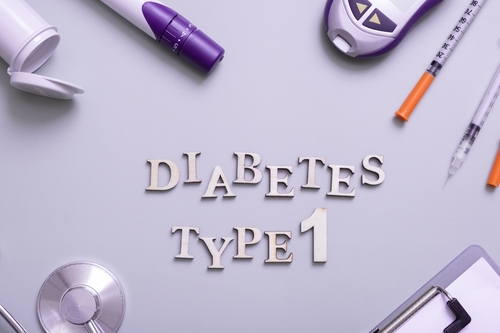Expert Source Discusses Telehealth and Remote Team Work
By Rob Dillard - Last Updated: April 27, 2023As telehealth and remote work have become common during the COVID-19 pandemic, new research shows that it’s possible to build a cohesive, successful telehealth team when time is a critical factor and medical providers are working in separate locations.
DocWire News spoke with Regenstrief Institute Research Scientist Linda Williams, MD, a neurologist and an expert on telehealth, to speak about this modality and its use by medical teams to provide optimal patient care where and when needed.
DocWire News: Can you speak to us about the importance of telehealth, especially now amid the COVID-19 pandemic?
Dr. Linda Williams: Sure. Well, as we all know, for most of us, we’ve probably experienced telehealth now when we hadn’t maybe a year or so ago. But telehealth is increasingly important because of the pandemic, but even before the pandemic, telehealth was growing in its use and its application. The system that I primarily work in the Veterans Affairs Health System was a big user of telehealth to reach rural veterans, veterans who live a long distance from their VA facility. So I think what the VA had been experiencing is now being experienced by a lot of us in our healthcare systems where we have a greater need to reach patients effectively, but without increasing risk or just to make care more easily accessible for patients.
What are some of the main benefits of implementing telehealth?
I think one of the main benefits, as I mentioned, is reaching people who otherwise have a difficult time accessing healthcare. That could be because they live a long distance from a provider that they need to see. I’m a neurologist, so not everyone has a neurologist in their hometown or in a close by town. So to reach a specialist, that can be especially helpful. I’m also a stroke specialist. And so many of my patients have difficulty traveling because they have a disability. It’s hard for them to get in a car, it’s hard for their family to bring them, perhaps. And so telehealth is another benefit for those patients because it means they can access their provider more readily without the difficulty of maybe making a half-day journey to travel.
How is it possible to build a telehealth team when time is critical?
I’ve been part of the VA’s National Telestroke Program, which is a telehealth program that provides acute emergency care to veterans who are presenting to an outside emergency department with a stroke. But that emergency department in that hospital doesn’t have a neurologist that they can get to see the patient acutely. That’s very important, especially for stroke, where time is brain. For stroke care, you need to deliver acute care within three to four and a half hours of the symptoms beginning. So you don’t have time to transfer patients an hour away to a larger medical center. So the VA has been doing a National Telestroke Program for about five years now. And we were interested in seeing if a program like this, who has a stroke specialists from all over the country, providing services via telehealth would be able to develop a sense of team cohesion, despite the fact that they don’t get together. They don’t ever meet; they’re in totally different locations. So our project interviewed those telehealth providers to see what their experience was like joining this new Telecare System.
Where do you see the future of telehealth in five years?
Well, I think that telehealth is going to increase. I think that now that many people have experienced it, both patients and doctors, they’ve realized that there are some real benefits to it. It doesn’t solve every problem. And there are definitely times when you need to see a patient in person. And there may be patients who have a strong preference to see their doctor in-person. But I think that telehealth is going to be increasing, not just for emergency care, but for routine care as well. And I think that’s really important. I think access to healthcare has been a problem. It’s one of the issues that we face in providing equitable health care across all levels of diversity. And I think that that’s going to help us provide better care for patients. I think what our study showed is that it is possible to form a cohesive team of people that work totally virtually, that don’t ever meet.
And of course, most of us in our work lives have perhaps experienced the challenges and the potential benefits of that as well. What we found in our project was that when telehealth providers had a weekly meeting, a virtual meeting, where they were able to sort of share difficult cases, talk about problems they might have experienced, that was very helpful to making them feel more of a cohesive part of a team. And then we also found that if the providers had some agency in solving problems, so if they were given an opportunity to help solve problems, rather than having the organization sort of work on their behalf in the background, that also helped them engage and make them feel part of a constructive cohesive team.
We were surprised we had some telehealth doctors tell us that they felt more a part of their telehealth team, which was a virtual national team, than they did with doctors that were at their same hospital. So I think that those were the two big keys that sort of open communication chance especially for doctors to share difficult cases and ask opinions of their colleagues. And then also the chance to work together to solve problems really helped this team stay successful and stay intact and continue to be operating today.
Any closing thoughts?
No, I would just encourage anyone who hasn’t tried a telehealth visit to give it a try. If your parents need telehealth, don’t be afraid to help them access telehealth with their provider. That can be a huge benefit and provide good, open communication with your doctor. So I just encourage everyone to give it a try.







 © 2025 Mashup Media, LLC, a Formedics Property. All Rights Reserved.
© 2025 Mashup Media, LLC, a Formedics Property. All Rights Reserved.